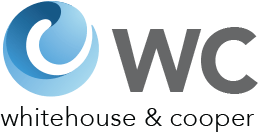
New Top Level Domains Bring Both Opportunities and Headaches
Today, the Internet Corporate for Assigned Names and Numbers (ICANN) is releasing nine new generic top-level domains (gTLDs). ICANN will make approximately 10 new gTLDs publicly available each week during the next few years, bringing the total to more than 1,400.
With today’s release, gTLDs like .com, .net and .org are being joined by:
- .bike
- .camera
- .clothing
- .equipment
- .guru
- .lighting
- .singles
- .ventures
- .voyage
The goal of this massive rollout of gTLDs is twofold. From the consumer’s perspective, ICANN believes new, more specific gTLDs will provide greater clarity and help people find exactly what they need.
From a business perspective, organizations can use more descriptive gTLDs to establish a more relevant online presence and hone in on their target audience. Also, organizations that registered long, often complex
domain names in order to get a .com website address can now simplify their domains.
With Opportunity Come Opportunists
Yes, new gTLDs may very well provide valuable benefits to businesses and consumers. However, they might just create a cybersquatting nightmare. In a previous post, we discussed how cybersquatters attempt to profit from trademarks by registering domains with similar or identical names.
When there were only 22 gTLDs before today’s release, organizations could register a bunch of domains to prevent cybersquatting and guard against abuse. With more than 1,400 gTLDs on the way, this approach is unrealistic, impractical and cost-prohibitive for small-to-midsize businesses. Domain portfolio management just got a lot more complicated, and the opportunists are licking their chops.
New Protections Are Helpful, but Not Bulletproof
To help organizations manage their domains and protect their trademarks, ICANN created a Trademark Clearinghouse (TMCH). Organizations can register their trademarks with the TMCH for up to five years. When a new batch of gTLDs is made available, a Sunrise period will be launched.
During this pre-registration period, organizations that have registered their trademarks with the TMCH will have priority to register the new gTLDs. If the application conflicts with an existing trademark, the applicant will be notified, and trademark owners will be notified if the application for the domain in question continues. While the TMCH should be effective in raising red flags, it can’t prevent disputes that are time-consuming, costly and potentially damaging to your organization.
Donuts Inc., a domain registry, has proposed the Domain Protected Marks List (DPML), a right protection mechanism that will block the registration of any domain that includes a trademark on its list across the 300-plus gTLDs it controls. The cost to get on the DPML is $3,000 per trademark and it doesn’t eliminate the threat of cybersquatting.
The Risks of Entering Uncharted Territory
A company that had a longstanding trademark license agreement with Del Monte Foods applied for the .delmonte TLD according to the terms of that agreement. Del Monte Foods disputed and successfully blocked this application in court.
The court ruled that the trademark license agreement did not specifically cover the use of a brand-specific TLD (.delmonte) and therefore did not give the company the right to register and operate the TLD. This is just one example of how new gTLDs can open the door to uncertainty and dispute, even among trusted partners.
With an influx of gTLDs on the horizon, an attorney can help you review your domain portfolio and trademark license agreements, develop a formal policy for registering gTLDs, better understand the protections that exist, and determine how disputes should be addressed. Domain names represent valuable assets and intellectual property that must be protected.





1 Comment
[…] be confused into thinking this has something to do with the “Sunrise” period associated with the new generic top-level domains (gTLDs). It doesn’t. An Internet search shows that the wording of the scam email has changed […]